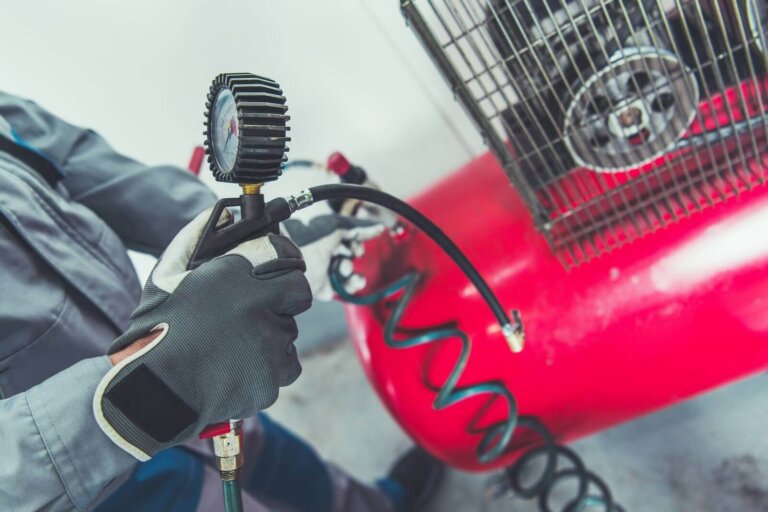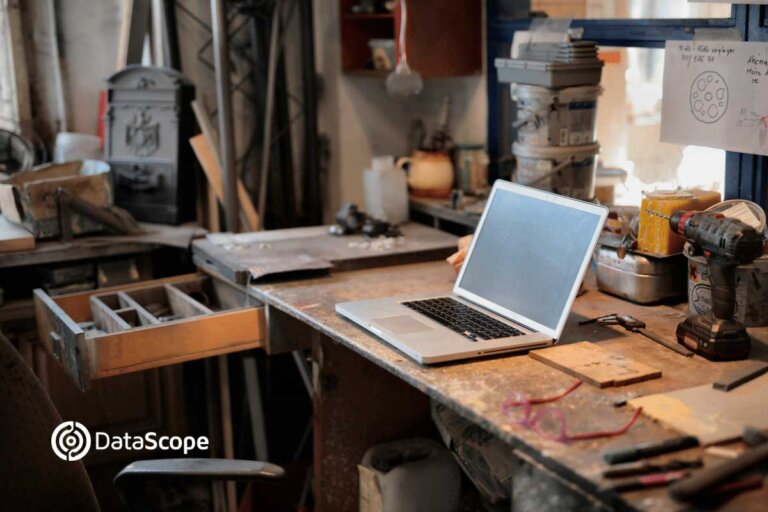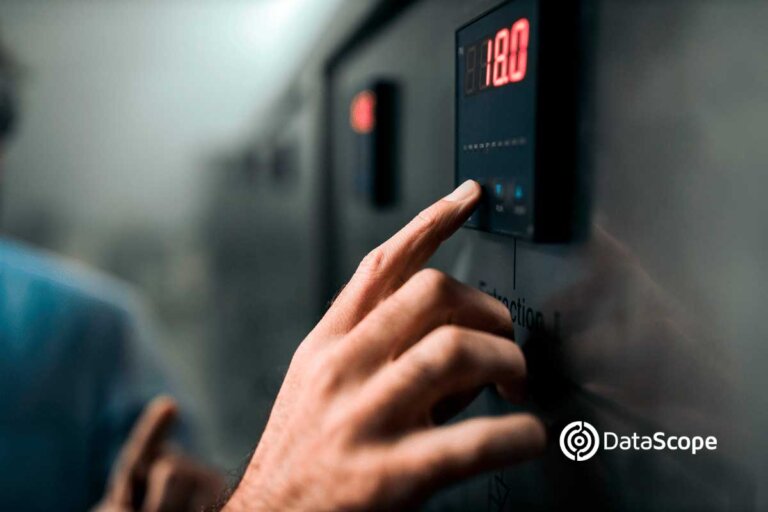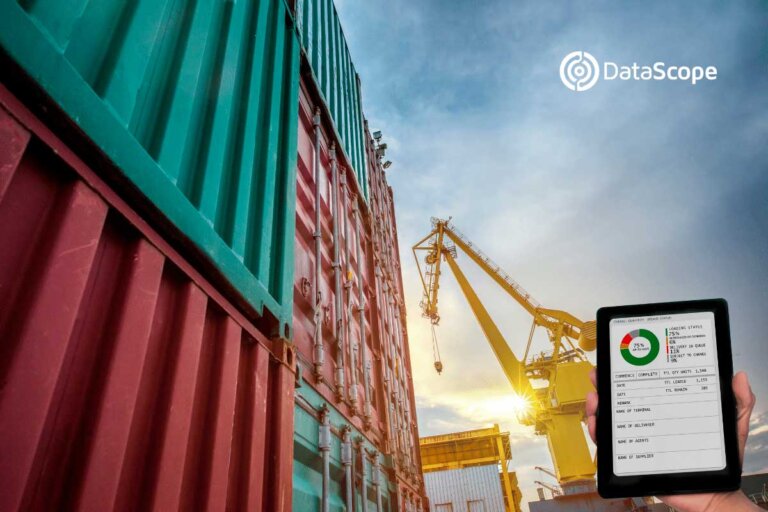This strategy is essential for operational efficiency and commercial success of any company. However, there are certain advantages and disadvantages, as well as technical and methodological details, which should always be considered before developing and applying the respective plan.
Preventive maintenance is very important to running a business, as it increases the useful life of equipment, reduces unwanted downtime and, at the same time, amortizes operating costs in the long term.
Technically, it consists of practicing interventions that prevent breakdowns and reduce the probability of asset failure. In other words, it is a planned maintenance carried out even when the equipment is at its full operational capacity.
It can be of different types. Simple actions such as cleaning and replacement of filters, visual inspections or periodic lubrications. But, it can also involve delicate and complex tasks, such as crane calibration, leak detection, or the replacement of a gas turbine in a thermoelectric plant, for example.
MAIN TYPES
We can classified preventive maintenance according two main classes:
– Time-based
It consists of carrying out periodic reviews at previously defined time intervals, regardless of the use of the assets. For example, the periodic inspection of an elevator, every two years; or a forklift, every six.
– Usage-based
It consists of carrying out reviews based on the actual use of the assets. For example, lubricate a machine every 500-production cycles; or, check a fleet of trucks, every 10,000 kilometers.
Preventive maintenance should not be confused with predictive or prescriptive maintenance. They all aim to prevent breakdowns and asset collapse, but there are substantial differences between them.
Predictive maintenance focuses on predicting when a failure will occur, in order to prevent it. Therefore, it does not use predefined usage or timeframes.
Prescriptive maintenance, meanwhile, has a higher level of computerization, as it uses Artificial Intelligence algorithms to prescribe actions based on data and indicators collected in real time on each equipment.
APPLICATIONS AND RISKS
Preventative maintenance is a valuable tool to ensure the operational continuity of critical business assets. However, it is not always the best option as an ongoing strategy.
When is it recommended?
For assets whose probability of failure increases with time and use. In these cases, we need to schedule a pattern that allows the respective maintenance program, in accordance with statistics drawn from the expected operation of the equipment, and the manufacturer’s recommendations.
In these cases, it is possible:
A) Increase the useful life of the asset in question and,
B) Maintain its productivity over time.
When should it NOT be used?
When it is not possible to establish a recurring pattern in the failures or breakdowns of an asset. For example, randomly failing equipment such as a fuse, battery, cable, or electrical outlet.
In conclusion, preventive maintenance should be applied only to essential assets for the normal operation of the company; and those whose repair or replacement is more expensive than regular preventive activities.
Likewise, companies should not fall into excessive preventive maintenance, and not apply it to assets of low value or priority. This can lead to costs that are too high in relation to the downtime that result from these actions.
STRATEGIC IMPORTANCE
Preventive maintenance increases the useful life of assets, as well as the percentage of planned maintenance. At the same time, it generates efficiency, competitiveness and better market positioning. This is determined, from the following advantages:
– Reduced downtime and increased efficiency
Avoid unscheduled shutdowns, increases equipment uptime and availability, improving overall efficiency. Consequently, we obtain a higher return on the initial investment, and better results for the delivery terms established with customers.
– More reliability of assets
It enables equipment to be more reliable, functionally, and have a longer service life. This reliability provides more realistic forecasts about the operation of the company, its productive capacity and income. Essential characteristics for both the primary, secondary and tertiary sectors.
– Costs reduction
Compared with a reactive action, all good preventive maintenance translates into savings in resources, time, spare parts and transportation, among other factors. Acting in an emergency always involves very expensive repairs and even the replacement of critical assets. Therefore, we can prevent all of this by conducting scheduled reviews.
– More security
Periodic reviews allow detecting the wear of parts and keep the equipment in optimal condition. This offers more security to those who are in contact with the asset, both operators and customers. For example, preventively maintain the elevators of a plant or an office building will prevent several accidents by a failure.
– More comfort
Ensures full operation of equipment, without having to shut down the entire system for repairs. A fundamental advantage in critical systems and situations such as, for example, air conditioning in summer, or heating in winter.
HOW TO DESIGN A GOOD PROGRAM
To implement a good preventing maintenance strategy, we must draw up a plan that has all its tasks well defined. This implies taking into account factors such as materials, parts, necessary labor, and even hiring specialized external services. This process has five stages:
1. Define the objectives
First, we have to clearly establish what we hope to achieve. For example, do we want to reduce downtime, increase asset reliability, reduce costs or increase the planned maintenance rate? In addition, it is necessary to be clear about what we have done previously in order to achieve these objectives, and where we have failed before. This first diagnosis is the starting point.
2. Make an inventory of assets
For a more comprehensive plan, we need to map our assets. That is, organize them by equipment families and location. Each asset must be associated with the manufacturer’s recommendations, warranties and quality standards that must be met (E.g. ISO).
3. Establish priorities
Time and resources are limited, and not always we can achieve the desired preventive maintenance. Therefore, we must choice the most critical assets first. Select those essential to the normal operation of the business, those that can cause large losses, and those that pose the greatest risk in bankruptcy.
To establish priorities according to the current conditions of each team, it is important to carry out risk assessments. For example, inspecting gas leaks is always a priority, because that action will allow us to protect the whole safety of all who use the facilities.
4. Create KPIs for the maintenance plan
To know if the plan meets its objectives, the maintenance manager must be able to track events over time. The best way to do this is through performance indicators (KPIs).
5. Review and improve the plan
From the results obtained (in accordance with the defined KPIs), progressive improvements must be applied to the plan. Even if we obtain good results, we always must remember that everything can be improved.
HOW TO DRAW A GOOD TIMELINE
Once the plan is ready, it is necessary to define application dates and times, as well as the equipment that will go into maintenance. This work can also be divided into 5 stages:
1. Determine the productivity of labor
In order to have a realistic schedule, it is necessary to know how many hours maintenance technicians spend on this task (and not on unproductive actions such as looking for tools, moving around or reading orders). With an efficient planning, the average can go from 25-35% to 50%.
2. Analyze the maintenance backlog
Overdue tasks must be evaluated and pending tasks completed, before taking new actions.
3. Adjust the schedule based on the maintenance plan
We must determine how many workers, hours, materials, and tools are needed for each planned task. We must also have to define the best days and hours to perform those tasks that require to temporarily deactivate assets.
4. Prepare for surprises
There are always faults that occur randomly. Therefore, any schedule must be flexible enough to define response times to those that require corrective maintenance. Any “unforeseen” arising in this phase must always be classified as corrective maintenance.
5. Schedule tasks (work orders)
We must determine them by day and time, providing all the necessary information for maintenance technicians to execute them safely and effectively.
IS IT POSSIBLE TO AUTOMATE?
One of the biggest difficulties in making a maintenance plan is mapping the assets and matching it with recommended repairs or inspections. In infrastructures with a large number of assets, it is practically impossible to organize this entire inventory using conventional systems such as “manual spreadsheets”.
Fortunately, technology allows optimizing this task, thanks to the use of Maintenance Management Software (MMS).
This tool allow us to inventory assets and associate them with certain information parameters such as category, brand, equipment model, serial number, location, supplier, technician in charge, user manuals and dates of previous interventions, among other variables.
In this way, it makes easier and more efficient the task to create preventive maintenance plans for different critical equipment.
In addition to automatically scheduling tasks that only depend on the passage of time, it allows to set limits to generate interventions based on utilization.
Likewise, a CMMS allows monitoring the execution of plans in real time. To do this, the software analyzes data, automatically calculates the main KPIs and, simultaneously, reviews and adapts the plans at any time.
EVALUATION AND REVIEW OF THE PLAN
Regardless of the type of assets managed, and the specific KPIs defined for each company, there are common metrics and goals that should always be part of this equation. These are:
– Compliance rate
It corresponds to the rate of preventive maintenance carried out within the established period. Ideally, this should be at least 90%.
– Critical percentage of scheduled maintenance
It should be as close to 100% as possible.
– 80/20 ratio between scheduled and unscheduled maintenance
This means that at least 80% (ideally 85%) of the hours spent on maintenance should be for preventive tasks. At most, only 20% of the time should be devoted to corrective maintenance.
– 10% margin rule
We must try to complete all tasks ahead of schedule, with a 10% margin. This means that, if we need to complete a task in 100 days, then we have to try to do it only in 90.
If the results are not up to expectations, we must necessary optimize the effectiveness of the whole maintenance plan, according to each of these indicators.
ADVANTAGES AND DISADVANTAGES
There is no doubt that preventive maintenance offers concrete advantages to any company. However, it is not always the ideal strategy. For example, always acting according to a schedule can lead us to apply actions to equipment that is still in optimal operating condition. This would lead us into unnecessary expenditure of resources, time and specialized labor.
Therefore, any preventive maintenance strategy has the following advantages and disadvantages, both in the internal functioning of its operations, and in the impact on the service provided and customer satisfaction.
WHAT ARE THE BENEFITS?
– Increases the useful life of the equipment. This also increases the return on investment.
– Avoid unscheduled stops. This improves the operation of the company.
– Improves equipment reliability. This results in forecasts that are more realistic.
– Reduces maintenance costs on high-value assets, as it is cheaper than corrective maintenance and predictive maintenance methods available today.
– It is easier to follow a budget for maintenance actions, because it reliably predicts how we can allocate resources throughout the year.
– Saves resources, since equipment with operational failures tend to use more energy and lose quality.
– Provides more security in the facilities, since all assets are kept in the best conditions and without wear.
– It allows meeting deadlines with clients, since there are fewer stops and it is easier to predict the output.
– Provides a better experience to customers, by meeting their expectations on the quality of service. This results in loyal customers.
WHAT ARE THE EVENTUAL DAMAGES?
– Takes more time, both to plan and to inspect.
– It requires readjusting the habits of the team and, possibly, adopting new software.
– Cannot be used on equipment that fail randomly.
– As it is not based on the condition, it can result in unnecessary actions.
– May result in higher costs, if it is applied to lower value or priority assets.
– May require more outsourcing work, forcing the search for new suppliers.
– To ensure that we met the deadlines, we must continuously negotiate the Service Level Agreements with suppliers and partners.






